
Choplifter is a military themed scrolling shooter developed by Dan Gorlin for the Apple II and published by Broderbund in 1982. It was ported to Atari 8-bit computers the same year and also to the VIC-20, Commodore 64, Atari 5200, ColecoVision, MSX, and Thomson computers.

Gunship is a combat flight simulation video game developed and published by MicroProse in 1986. In the game, controlling a simulated AH-64 Apache helicopter, players navigate through missions to attack enemy targets and protect friendly forces. Commercially and critically successful, Gunship was followed by Gunship 2000 and Gunship!.
1989 saw many sequels and prequels in video games, such as Phantasy Star II, Super Mario Land, Super Monaco GP, along with new titles such as Big Run, Bonk's Adventure, Final Fight, Golden Axe, Strider, Hard Drivin' and Teenage Mutant Ninja Turtles. The year also saw the release of the Sega Genesis and TurboGrafx-16 in North America, and the Game Boy worldwide along with Tetris and Super Mario Land.

Wizard's Crown is a top-down role-playing video game published by Strategic Simulations in 1986. It was released for the Atari 8-bit computers, Atari ST, IBM PC compatibles, Apple II, and Commodore 64. A sequel, The Eternal Dagger, was released in 1987.

One on One: Dr. J vs. Larry Bird, commonly known as One on One, is a basketball video game written by Eric Hammond for the Apple II and published by Electronic Arts in 1983. It was initially ported to the Atari 8-bit computers, ColecoVision, Commodore 64, and IBM PC compatibles. Versions followed for the TRS-80 Color Computer, Classic Mac OS, Amiga, and ZX Spectrum. In Europe, the publisher was Ariolasoft. Atari Corporation released an Atari 7800 port in 1987.
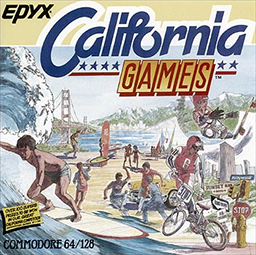
California Games is a 1987 sports video game originally released by Epyx for the Apple II and Commodore 64, and ported to other home computers and video game consoles. Branching from their Summer Games and Winter Games series, this game consists of a collection of outdoor sports purportedly popular in California. The game was successful and spawned a sequel, California Games II.

Skyfox is a combat flight simulation game developed by Ray Tobey for the Apple II and published by Electronic Arts in 1984. Ariolasoft published the game in Europe. It was released for the ZX Spectrum, Amstrad CPC, Commodore 64, and Macintosh in 1985, to the Amiga and Atari ST in 1986, and to the PC-88 in 1988.
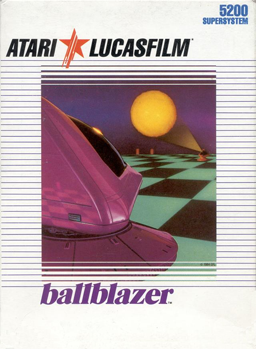
Ballblazer is a futuristic sports game created by Lucasfilm Games and published in 1985 by Epyx. Along with Rescue on Fractalus!, it was one of the initial pair of releases from Lucasfilm Games, Ballblazer was developed and first published for the Atari 8-bit computers. The principal creator and programmer was David Levine. The game was called Ballblaster during development; some pirated versions bear this name.

Winter Games is a sports video game developed by Epyx, based on sports featured in the Winter Olympic Games.
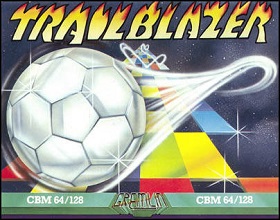
Trailblazer is a racing video game developed by Mr. Chip Software and published by Gremlin Graphics for the ZX Spectrum, Commodore 64, Atari 8-bit computers, Amstrad CPC, Commodore 16 and Plus/4 in 1986. It was ported to the Amiga and Atari ST.

F-15 Strike Eagle is an F-15 Strike Eagle combat flight simulation game released for Atari 8-bit computers in 1984 by MicroProse then ported to other systems. It is the first in the F-15 Strike Eagle series followed by F-15 Strike Eagle II and F-15 Strike Eagle III. An arcade version of the game was released simply as F-15 Strike Eagle in 1991, which uses higher-end hardware than was available in home systems, including the TMS34010 graphics-oriented CPU.

World Games is a sports video game developed by Epyx for the Commodore 64 in 1986. Versions for the Apple IIGS, Amstrad CPC, ZX Spectrum, Master System and other contemporary systems were also released. The NES version was released by Milton Bradley, and ported by Software Creations on behalf of producer Rare.

Moebius: The Orb of Celestial Harmony is a video game produced by Origin Systems and designed by Greg Malone. It was originally released in 1985 for the Apple II. Versions were also released for the Amiga, Atari ST, Commodore 64, Macintosh, and MS-DOS. The game is primarily a top-down view tile-based role-playing video game, but it has action-based combat sequences which use a side view, roughly similar to games such as Karateka.

Computer Baseball is a sports simulation game published by Strategic Simulations in 1981. It was released for the Apple II, Atari 8-bit computers, and later for the Commodore 64, Macintosh, IBM PC, and Amiga.

GBA Championship Basketball: Two-on-Two is a 1986 computer basketball game for the PC, Amiga, Apple II, Apple IIGS, Amstrad CPC, Atari ST, ZX Spectrum and Commodore 64. It was developed by Dynamix and published by Activision.

Test Drive is a racing video game developed by Distinctive Software and published by Accolade, released in 1987 for the Amiga, Atari ST, Commodore 64, and DOS, in 1988 for the Apple II, and later ported for the PC-98 in 1989. It is the first game in the Test Drive series.

Shanghai is a computerized version of mahjong solitaire published by Activision in 1986 for the Amiga, Atari ST, Atari 8-bit computers, Commodore 64, MS-DOS, classic Mac OS, Apple IIGS, and Master System. Shanghai was originally programmed by Brodie Lockard. It was released as an arcade video game by Sunsoft in 1988.
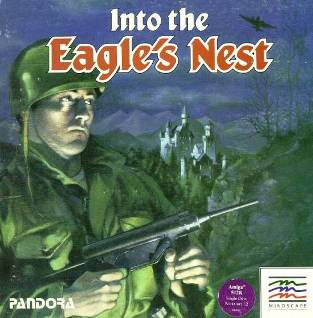
Into the Eagle's Nest is a video game developed by Pandora and published for Amiga, Amstrad CPC, Apple II, Atari 8-bit computers, Atari ST, Commodore 64, IBM PC compatibles, and ZX Spectrum starting in 1987.

Ogre is a 1986 computer game based on the Ogre board wargame. It was released by Origin Systems for the Apple II, Amiga, Atari 8-bit family, Atari ST, Commodore 64, MS-DOS, and Macintosh.
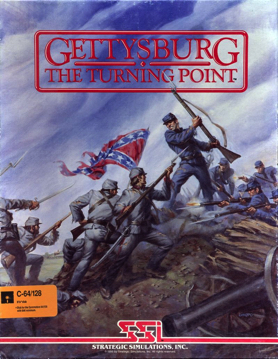
Gettysburg: The Turning Point is a 1986 computer wargame by Strategic Simulations for the Atari 8-bit computers, Apple II, Commodore 64, Amiga, and IBM PC compatibles. An Atari ST version was announced but not released.




















